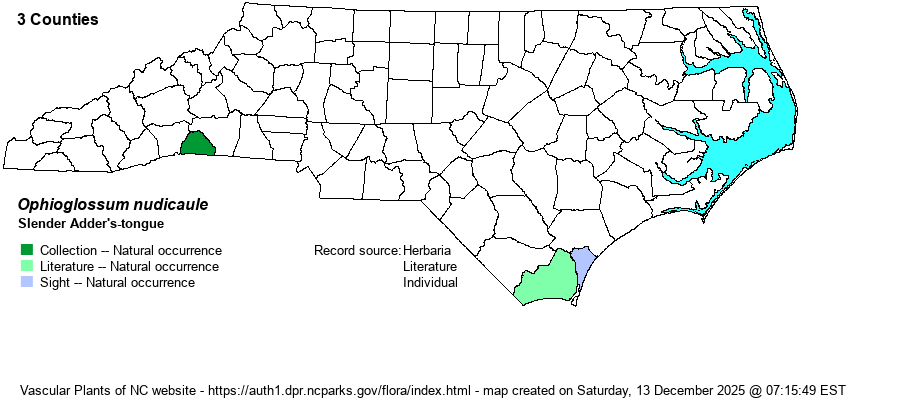| Author | L. | |
| Distribution | Known only from a collection in 2010 in Polk County (southern Piedmont/Mountains), an historical sighting from Brunswick County (Coastal Plain), and a recent photo from New Hanover County (Coastal Plain).
This is a Southern species occurring from southern NC and OK south to southern FL and eastern TX. Also Latin America, Africa, and Asia. | |
| Abundance | Extremely rare, and should be tracked by the NCNHP as Significantly Rare instead of just Watch List. The website editors also suggest a State Rank of a straight S1 instead of S1? -- assuming that a species growing in such disturbed soil in the state is truly native. This is a very small species, easily overlooked, and other records from the southern counties of the Coastal Plain should be expected, as there are records for several SC counties along the NC state line. | |
| Habitat | The NC specimens are from an old field, in sandy soil under a tree. Weakley (2018) says "Pine flatwoods, lawns, and other moist, grassy areas". | |
| Phenology | Fruits from March to June. | |
| Identification | This is a tiny species, noticeably smaller than the fairly common O. pycnostichum. Its height is barely 2.5-3 inches tall. The sterile blade is elliptical to lanceolate, only about 2/5-inch long and 1/5-inch wide, with a sharp tip; it is barely raised off the ground. The fertile "spike" is raised about 2 inches above the sterile blade. The sharp tip to the tiny blade should be obviously different from that of O. pycnostichum, which has a much larger blade (1 inch wide or more) with a rounded tip. | |
| Taxonomic Comments | None
| |
| Other Common Name(s) | Least Adder's-tongue | |
| State Rank | S1? [S1] | |
| Global Rank | G5 | |
| State Status | W7 [SR] | |
| US Status | | |
| USACE-agcp | FAC link |
| USACE-emp | FAC link |

